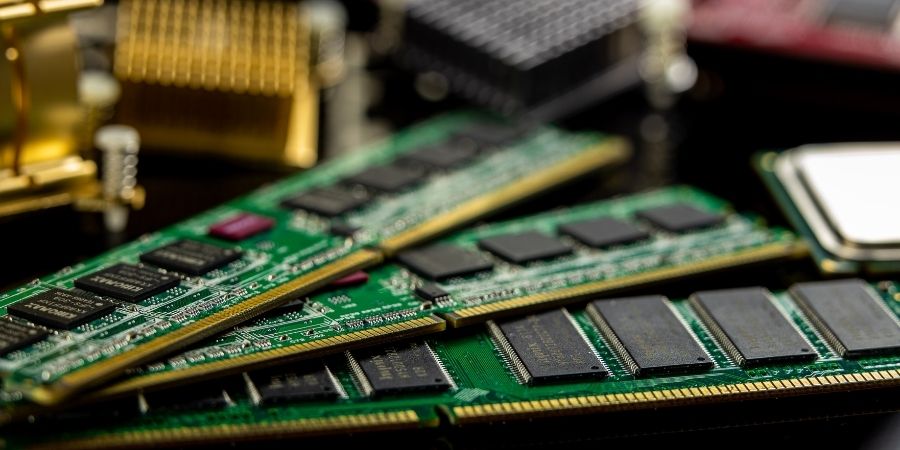RAM is an important part of the computer. It offers temporary but fast storage for the CPU. Computers use Synchronous Dynamic Random-Access Memory (SDRAM) that has evolved over the years through generations. Currently, the most common form is DDR4 SDRAM. With the release of 12th Gen Intel Core “Alder Lake” desktop processors, DDR5 SDRAM has come into the scene. One thing most of us can easily guess is that DDR5 RAM is faster than DDR4 RAM. But there is more to it. In this detailed guide, I will try to tell you important things about DDR5 RAM and how it differs from DDR4 RAM.
The speed of an SDRAM is generally measured in data rate and clock rate. In DDR4 RAM. we generally see advertised data rate numbers between 1,600MHz and 3,200MHz/ DDR RAM clock rates range from 800MHz to 1,600MHz.
DDR5 RAM comes with better data and clock rates. Data rates of DDR5 RAM ranges from, 4,800MHz to 8,400MHz, with the later numbers getting better as technology is being improved. Clock rates also range from 1,600MHz to 4,800MHz.
These numbers confirm a big upgrade in terms of performance. Reviewers have already found performance improvements after using DDR5 RAMs in games and in certain applications.
DDR5 RAMs have a die density of 64Gb as compared to 16Gb in DDR4 RAM. That means more overall capacity in DDR5 RAMs as compared to DDR4 RAMs. In DDR4 RAM, the largest memory modules you can buy has a maximum limit of 32GB. In DDR5 RAM, it can be up to 512GB of RAM.
DDR5 channel architecture has also been changed. Now each DIMM has two channels instead of one. So, CPU can simultaneously access the same stick of RAM more than once. It improves efficiency.
Burst chop length and burst length in DDR4 RAM are 4 and 8 respectively. In DDR5, burst chop and burst length will be extended to 8 and 16 to increase burst payload, It further boosts concurrency. DDR5 RAM uses two channels, so greater memory efficiency.
In DDR4 RAMs, power management is done by motherboard, but PMIC built into the RAM stock manages power in DDR5 RAMs. DDR5 DIMMs will have a 12-V power management integrated circuit (PMIC). This ensures less power wastage. DDR5 also runs are lower voltage than DDR4. DDR4 RAM requires 1.2 volts to run while DDR5 requires marginally less at 1.1 volts. It may not seem good, but will surely play an important role in reducing power consumption in portable devices like laptops and tablets.
The physical slots for DDR5 RAM are different. So, you need a new motherboard if you want to use DDR5 RAM. In 2022, we can expect a range of new motherboards supporting DDR5 RAMs.
Wrap Up
DDR5 RAM seems much better than DDR4 RAM, you cannot really go and upgrade to it until the end of 2022. Chip shortage is the primary reason and we still don’t have many CPUs or motherboards supporting DDR5 RAMs.
DDR5 RAM will surely improve the performance of PCs but we will have to wait a few more months until PC gears are ready to unlock the potential of DDR5 RAMs.







